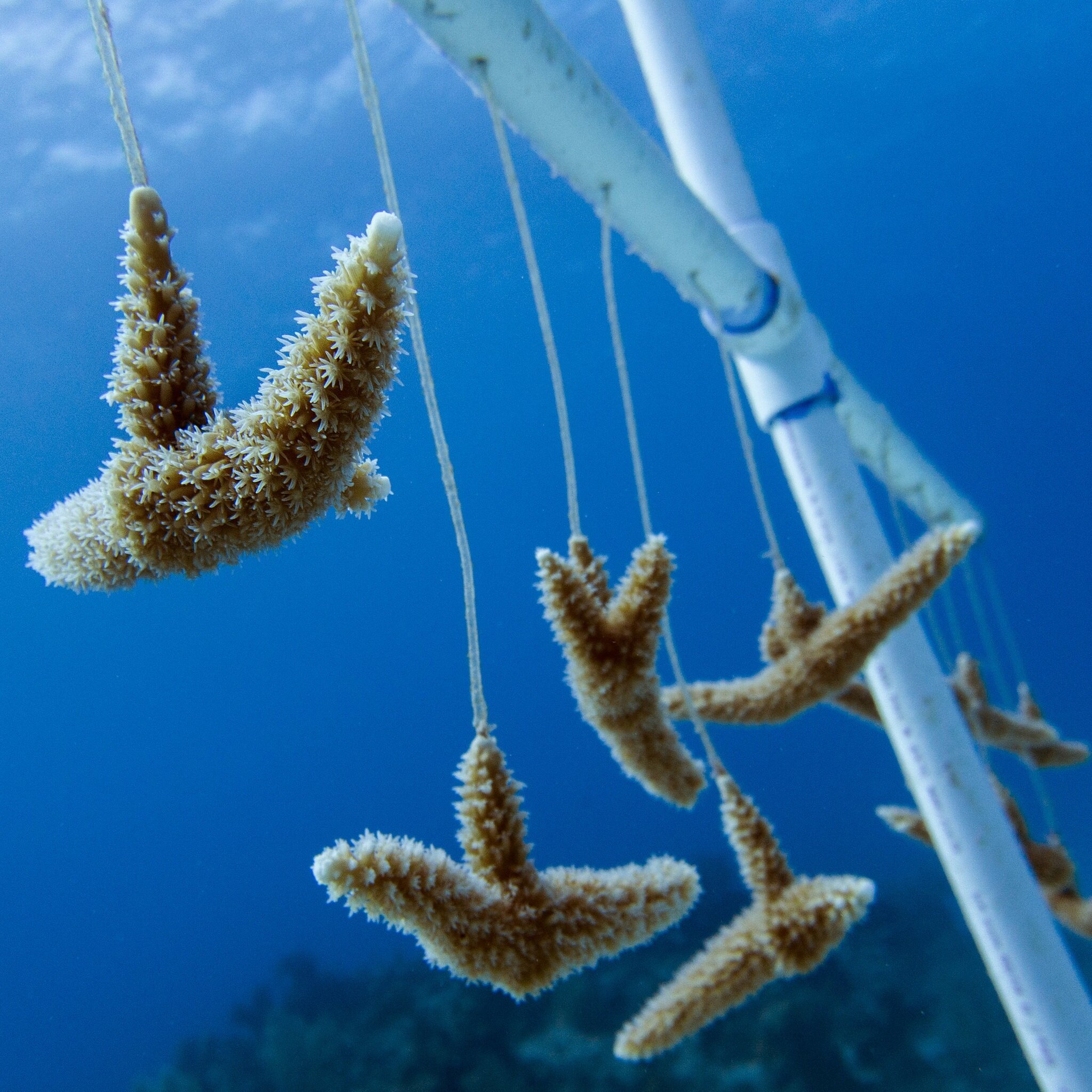past research projects have included:
disease resistance in coral juveniles
Stony coral tissue loss disease (SCTLD) has devastated Caribbean reefs, but we know very little about how it impacts coral early life stages. How much risk does SCTLD pose to coral juveniles bred for reef restoration? What drives patterns of susceptibility and/or resistance? Is disease resistance heritable, perhaps through genetics or the microbiome?
managed breeding for reef restoration
If new generations of corals are to survive, they will need to be both genetically diverse and able to withstand changing, stressful conditions. Can we breed parents that are especially resilient (i.e., heat-tolerant, resistant to disease), and will that resilience be passed on to their offspring?
Cryopreservation of coral sperm has emerged as a promising technology to conserve genetic diversity from further losses and facilitate managed breeding. Can we increase the accessibility of cryopreservation techniques to expand genetic banking efforts? Can we utilize cryopreserved coral sperm to generate diverse, resilient offspring?
underexplored trophic interactions
Coral reefs are highly complex ecosystems, and many interactions between reef organisms have gone understudied. It is likely that countless interspecific associations are more nuanced than previously expected. How do corals interact with other organisms on reefs, and how do these interactions impact their health and fitness?
Coral algal symbionts are extremely diverse, and each type may endow its coral host with different physiological traits. What are the potential benefits and trade-offs of altering symbiont community composition in corals used for reef restoration?
Most reef-building corals are not born with algal symbionts of their own, but instead acquire them anew each generation from the environment around them. How do corals establish symbiotic partnerships during their early life stages, and how do environmental conditions influence which partners they choose?
Different species of algal symbionts are suited for different environments, so changing conditions may favor certain types over others on large scales. How have symbiont communities on Caribbean reefs changed over the past several decades, and how will they continue to shift as the climate changes?







